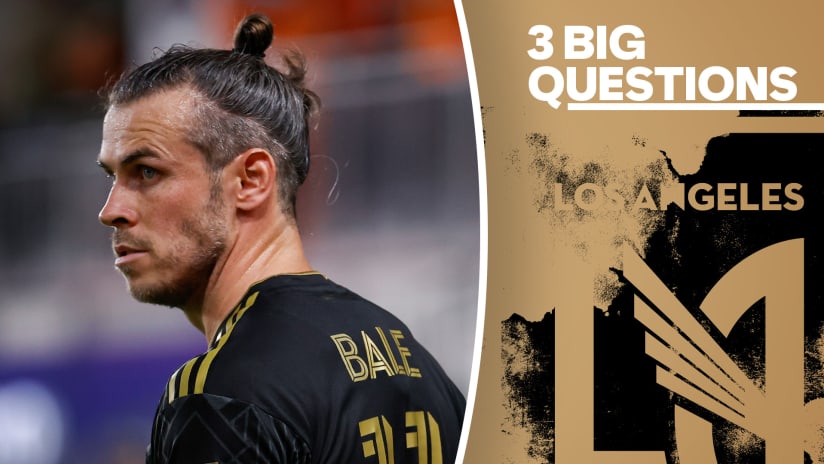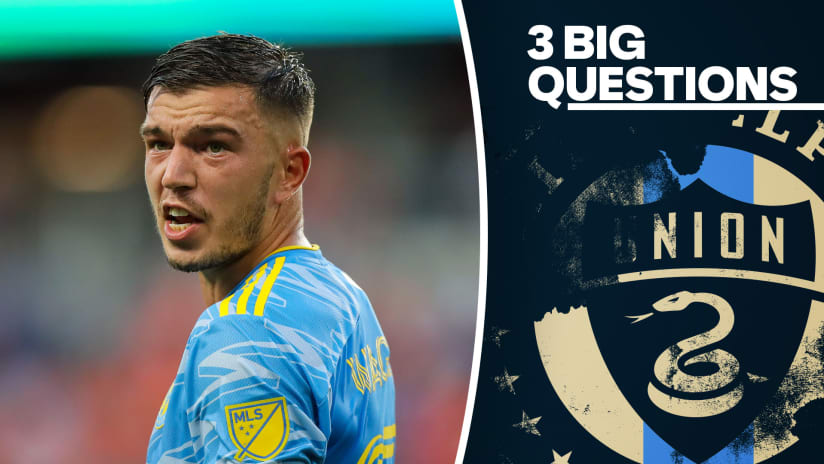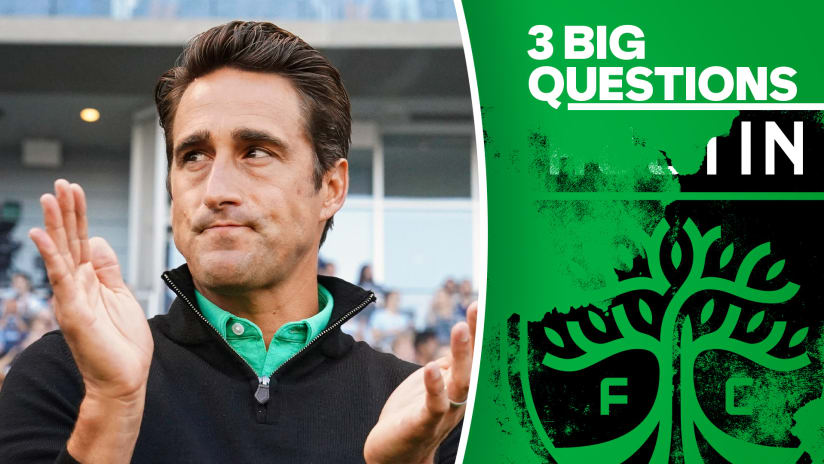As the 2021 MLS season draws to a close, clubs trickle over the line of being mathematically eliminated from the Audi MLS Cup Playoffs. Though games remain, focus shifts to the offseason and what's next.
Here, we'll be covering three questions for every team moving forward. Think of it as an exit interview, if you will. Matt Doyle, as always, has you covered on his preeminent season-in-review for each club. Read that, too.
He has gifs. It’s tough to beat gifs.
The first year of the Phil Neville era came with ups and downs.
Inter Miami CF started decently, with an impressive win at reigning Supporters' Shield-winning Philadelphia Union early on and spoiling FC Cincinnati's long-awaited opening of TQL Stadium. A summer swoon then followed, before a genuine run back into Audi MLS Cup Playoff contention by early fall, which gave way to another letdown and Miami ultimately finishing 11th in the Eastern Conference standings.
The squad still has big-name talent, headlined by Designated Players Gonzalo Higuain, Rodolfo Pizarro and Blaise Matuidi, as well as key veterans like Leandro Gonzalez Pirez, Gregore and Nico Figal. Neville experimented with how to best organize the players at his disposal and will continue to theorize over the offseason as inevitable change arrives.
Off the field, though, Miami were a national story during the 2021 season's onset as MLS investigated transfer dealings from their expansion campaign and subsequently dolled out significant sanctions. Let's start there because that's the biggest question facing this club as the offseason rolls around in South Florida.
In March 2020, the league announced Inter Miami were under investigation around the acquisition of Matuidi. Specifically about his roster classification as a TAM player, meaning his contract was no more than $1.53 million. The league announced in May that not only should Matuidi have been a DP, but so too should have then-on-loan defender Andres Reyes. So they technically had five DPs in the eyes of roster rules.
- $2 million fine to the club and $250,000 fine to managing owner Jorge Mas
- A reduction of $2,271,250 in allocation dollars for the 2022 and 2023 seasons
- It also gave them four DPs for three spots. Young DP Matias Pellegrini was bought out and then loaned to Estudiantes.
It's worth reminding sporting director Chris Henderson and Neville inherited these sanctions and were not at the club when the incidents in question occurred.
But they're here now and they have to move forward this winter, as difficult a hand as they were dealt. That reduction in xAM is the place to focus. Allocation money and its use is esoteric to casual fans and, heck, even to "MLS Insiders." It can be confusing. And allocation money is versatile. It's not directly lowering the cap, or taking away a DP or international roster spot, which would feel more tangible/easily broken down.
xAM can be used in different ways. The two most useful are buying down contracts or acquiring assets.
Buying down contracts
Essentially, allocation money can buy down the cap hit of contracts. While the cap is $4.9m, teams can use allocation money to buy down contracts, thus expanding the cap.
One way to think of the loss of $2.27m for each of the next two seasons is to take away a consequential part of the salary cap. Another way to think about it is how many players it impacts. It stands to reason Miami could have used allocation money to buy down cap hits for six to eight players.
They definitely did so for the likes of Gonzalez Pirez, Gregore and Lewis Morgan, per official club press releases, and they're definitely not the only ones. That's not to suggest those players have to leave or anything, but they may already be chasing allocation money to retain a squad that finished 10th in the East last year and 11th this year before focusing on additions. That's a tough spot.
Acquiring assets
For the latter: $2.271 xAM could have been used this season to acquire Jeremy Ebobisse ($1.167m GAM) + Mark-Anthony Kaye ($1m GAM). Or Brian White ($400k GAM) + Kamal Miller ($225k GAM) + Tim Parker ($450k GAM + incentives) + Alex Ring ($750k + incentives). Or some combination of those players and a couple of international roster spots. You get it.
That is, obviously, significant.
At the very least, ownership have proven time and again they will spend and spend big, both on DP contracts (for Gonzalo Higuain and Matuidi) as well as transfer fees (reportedly $12 million for Pizarro, reportedly upwards of $9m for Pellegrini, reportedly $6m for Julian Carranza, reportedly up to $4m for Gregore, whatever the loan fee + contract it cost to make Reyes qualify as a DP in 2020, according to the league's investigations).
Irrespective of the success of any individual fee, it shows deep commitment: If there is room to maneuver, they aren't shy about trying to spend. It will take some cap gymnastics to maneuver, though. Here's where things stand with their three DPs:
- Higuain is on a multi-year deal and the team's focal point, with 12g/9a, so he'd appear to be a building block
- A source confirmed to MLSsoccer.com that Matuidi, who has struggled live to up to his reputation, is under contract through 2022
- Pizarro has been inconsistent, though linked with a move to Liga MX in the past
With three senior DPs, the club is given only one U22 Initiative spot. If they can free up a DP spot, that'd be another way to get cheaper talent on the cap. A club with two senior DPs and one Young DP can sign three U22 Initiative players. A young DP between the age of 21-23 hits the cap at a budget charge of $200,000. A U22 Initiative player between 21-23 hits the cap at $200,000. A young DP or U22 Initiative player aged 20 or under hits the cap at $150,000.
It would all be expensive in real-life dollars, of course, particularly if a DP spot was opened via a contract buyout (you still need to pay that contract, it just doesn't factor into the cap). Same thing with Young DP/U22 Initiative. Sure, they hit the cap at $200k, but the acquisition costs and contract are far more than that. But those are likely the best cap options.
One player at a time, right? That's really Miami's only option. With the damage done and assets committed, it won't be a quick, magical rebuild. Anything can happen in MLS, particularly with the right DPs, but it won't be easy.
The process started last year. Gregore has been worth every dollar he was acquired for and has already been given the captain's armband. Then it continued over the summer, with Inter adding starters at GK (Nick Marsman) and LB (Kieran Gibbs), as well as potential key rotation pieces/starters in Ventura Alvarado and Indiana Vassilev (who is on loan).
Going back to that first question about the sanctions: Teams both in MLS and across the world know Miami aren't in a great spot. Even under normal circumstances, a new GM and head coach would lead to the expectation that players could leave, meaning clubs would try to buy low when making offers. Add in the sanctions, with teams assuming Miami need to get out of some contracts/free assets? Offers this year haven't exactly been great.
Inter Miami will certainly be active. And it won't be boring.













